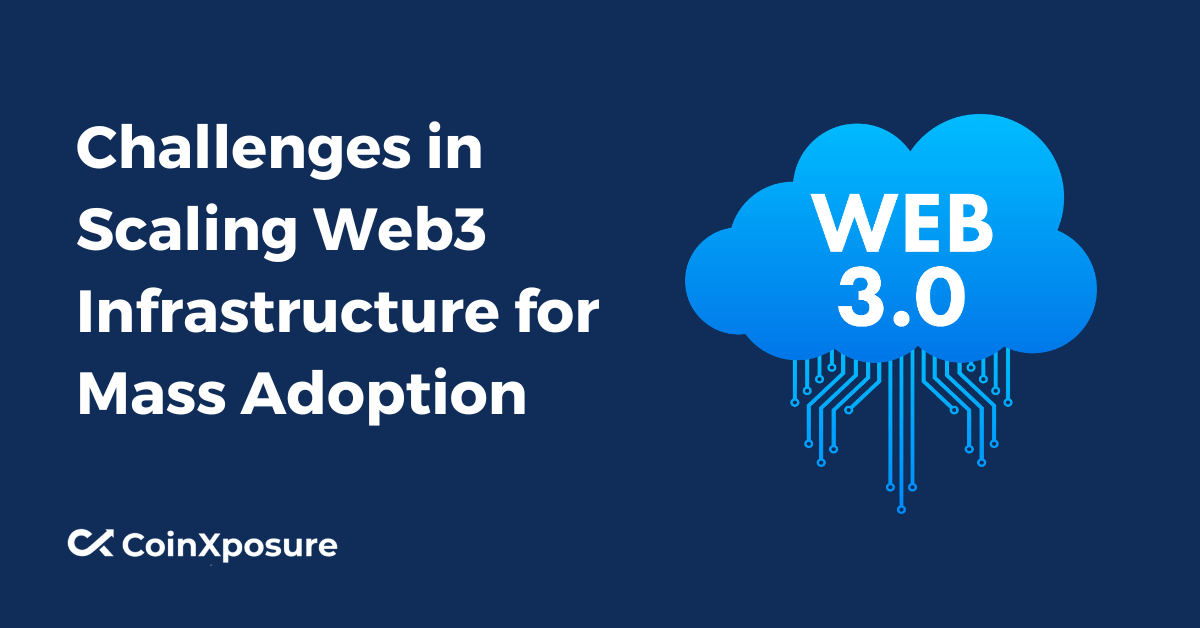The evolution of Web3 technologies promises a decentralized, transparent, and secure digital landscape. However, the journey towards mass adoption encounters formidable challenges in scaling Web3 infrastructure.
From technical limitations to regulatory complexities, this introduction will explore the multifaceted obstacles hindering the seamless expansion of Web3 into mainstream usage.
Understanding and addressing these challenges are pivotal to unlocking the true potential of decentralized technologies for a broader user base.
Technical Challenges
Technical challenges form a critical barrier to the widespread adoption of Web3 infrastructure. Key among these hurdles is scalability, where the current limitations of blockchain technologies hinder transaction throughput and overall efficiency.
Additionally, achieving interoperability across diverse blockchain networks poses a significant technical obstacle, requiring standardized protocols and effective cross-chain communication.
As the demand for decentralized solutions grows, navigating and overcoming these scalability and interoperability challenges becomes imperative for the seamless integration of Web3 technologies into everyday digital experiences.
Security Concerns
Security concerns loom large in the realm of Web3 infrastructure, primarily due to its decentralized nature. Smart contract vulnerabilities and risks associated with consensus algorithms pose significant threats.
Maintaining user privacy and safeguarding sensitive data become paramount challenges in this landscape.
As Web3 strives for mass adoption, addressing these security concerns is essential to instill confidence in users and ensure the robustness of decentralized systems.
Balancing decentralization with stringent security measures remains a critical focus for the sustained success of Web3 technologies.
User Experience
User experience is a pivotal factor influencing the mass adoption of Web3 infrastructure.
Onboarding and education are key challenges, requiring user-friendly interfaces and effective communication to demystify decentralized concepts.
Cost efficiency, including transaction fees and resource-intensive processes, is another aspect impacting the overall user experience.
As Web3 technologies aim to become more accessible, addressing these user-centric challenges becomes crucial in creating a seamless and inviting environment for a broader user base, ultimately fostering widespread acceptance and utilization.
Regulatory Landscape
Navigating the regulatory landscape poses a significant challenge to the mass adoption of Web3 infrastructure.
Legal uncertainties surrounding compliance and the evolving regulatory frameworks introduce complexities. As decentralized technologies gain traction, understanding and adapting to varying regulatory environments become crucial.
Overcoming these hurdles is vital to ensuring the legitimacy and acceptance of Web3, as developers and stakeholders work to strike a balance between innovation and adherence to regulatory standards in different jurisdictions.
Community Engagement
Community engagement is a critical aspect in the scaling of Web3 infrastructure. Decentralized decision-making processes and governance structures present challenges in balancing community interests.
As Web3 technologies evolve, fostering a collaborative and inclusive community becomes essential for effective development and adoption.
Navigating these challenges involves creating transparent communication channels, addressing concerns, and empowering the community to actively contribute to the growth and governance of decentralized systems, thereby ensuring the resilience and success of the Web3 ecosystem.
Infrastructure Development
Infrastructure development is a key facet in scaling Web3 technology. A notable challenge is the shortage of skilled talent, as the demand for expertise in Web3 development outpaces available resources.
Addressing this requires initiatives focused on training and education to cultivate a workforce proficient in decentralized technologies.
Additionally, advancements in layer 2 scaling solutions, such as sidechains and state channels, and improvements in consensus algorithms, like proof-of-stake, play pivotal roles in enhancing the efficiency and scalability of Web3 infrastructure.
Strategic investments and innovation in these areas are essential for overcoming infrastructure challenges and driving the widespread adoption of Web3 technologies.
Solutions and Innovations of Web3 Infrastructure
In response to the challenges faced in scaling Web3 infrastructure, several solutions and innovations have emerged.
Layer 2 scaling solutions, including sidechains and state channels, offer increased transaction throughput and reduced congestion on the main blockchain.
Optimistic rollups represent a promising approach to enhance scalability while maintaining security.
Advancements in consensus algorithms, such as proof-of-stake, contribute to improved efficiency and reduced energy consumption.
Hybrid approaches combining elements of different consensus mechanisms also show promise in achieving a balance between security and scalability.
As the Web3 ecosystem evolves, ongoing research and development in these areas continue to drive innovation, offering tangible solutions to overcome technical limitations and facilitate mass adoption.
Conclusion
The challenges in scaling Web3 infrastructure for mass adoption encompass technical, security, user experience, regulatory, community engagement, and infrastructure development aspects.
While obstacles exist, innovative solutions such as layer 2 scaling, advanced consensus algorithms, and hybrid approaches are actively addressing these challenges.
The success of Web3 hinges on collaborative efforts to navigate regulatory landscapes, enhance user experiences, and foster a robust and engaged community.
As developers, stakeholders, and policymakers work together to overcome these challenges, the potential for Web3 to revolutionize digital interactions and decentralized systems remains promising.
Continued investment in research, education, and technological advancements is imperative to unlock the full potential of Web3 and pave the way for its widespread adoption in the digital landscape.












